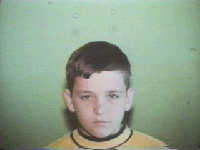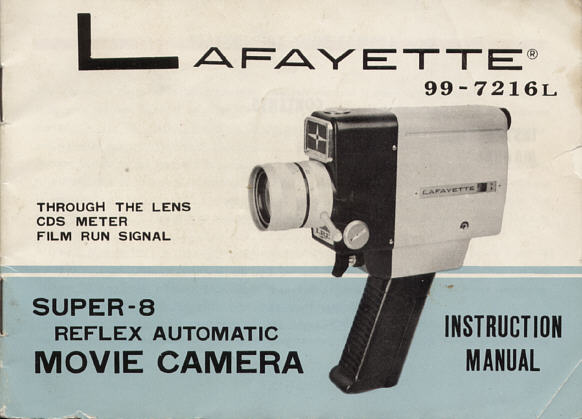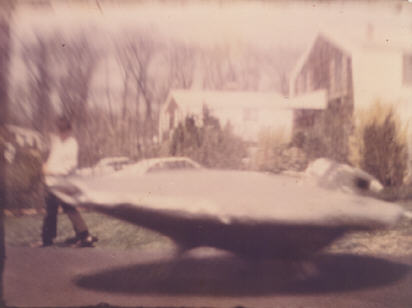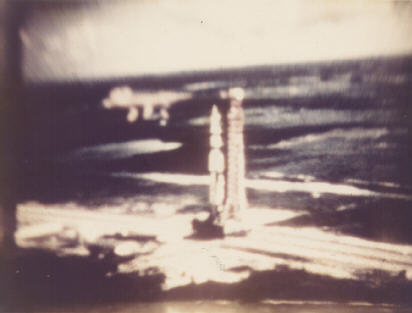|

I began making amateur Super 8 movies while a sophomore at Ward Melville High
School in East Setauket, Long Island. After pedalling my bicycle along my N.Y. Daily News route, I had enough money to purchase
a GAF Ansco movie camera for $20. I also bought a Bell & Howell Super 8 projector for a whopping $63 along with a blinding
flood lamp and a roll of Kodachrome film. I shot my first cartridge that night, January 3, 1970.
The Ansco didn't last long (it took a fatal plunge from an improperly strapped
camera case) and was replaced with a Lafayette Electronics Super-8 camera with a 3 to 1 zoom lens. This camera would carry
me through my high school film experiments that would lay the groundwork for the STAR TRIX films.
Starting out in film, I mimicked things I liked. One strong influence was the
MY FAVORITE MARTIAN TV series that was running in syndication at the time. I enlisted my younger brother Tom to play a Martian
and his look-alike earth friend. Being unable to do a split screen effect with the Super-8 cartridge, I contrived to show
both characters using quick cuts and quick clothes changes. When my youngest brother Larry got tall enough, he was used as
a stand-in and photographed from the back with Tom facing him from the front.
From late 1970 to April 1972, I cranked out 24 four or five minute short episodes
for the series which was named "Tom Vs. Joe La Rita"*. All were shot silent but fortunately Tom's facility for pantomime made
the "stories" somewhat coherent. Actually, they weren't so much stories as they were a few sentences scribbled on a piece
of loose leaf paper. They were mainly a hook on which to hang an experiment of some kind. For example, wanting to try a very
fine thread for levitation effects to see if we can avoid having it photograph.

|
| My second camera |

Unlike the MY FAVORITE MARTIAN series, I filmed a final episode where the alien
kid returns to Mars. He flies to Cape Kennedy in his spaceship and docks with an Apollo moonrocket just before it lifts off.
In 1971, Eastman Kodak introduced it's XL (Existing Light) movie cameras with high speed Ektachrome 160 film. It was designed
to shoot under low light conditions, reducing the need for the glaring floodlamps. Trying a role of Ektachrome in my Lafayette
camera, I photographed movies off the screen, hoping to be able to combine several projected images together. This was a crude
form of optical printer.

|
| Spaceship movie and slide composite |
Utilizing a slide projector with images of earth from space and the Saturn 5 rocket,
I combined footage of the spaceship model shot against a black velvet background and photgraphed the composite image with
Ektachrome 160. It worked well except for a slight strobing due to the camera and projector speeds not matching exactly.
This arrangement would be modified over the years to allow me to shoot spaceships, star fields, planets and other effects
for Super-8 films. It wasn't until I went into the service that I found out this can't be done. As Uncle Martin would say
"Sometimes ignorance is an ally".
*About that title: Even before getting a
movie camera, Tom and I were goofing around with the other kids doing the Martian thing. We put the makeshift antennaes on
Tom and tried pass him off as an alien. When someone asked the Martian's name, Tom called him Joe La Rita (a fracturing
of the name of 1960's Three Stooges actor Joe De Rita). So when I started making a series of films, Joe La Rita was the unlikely
name of our extraterrestrial.
|
